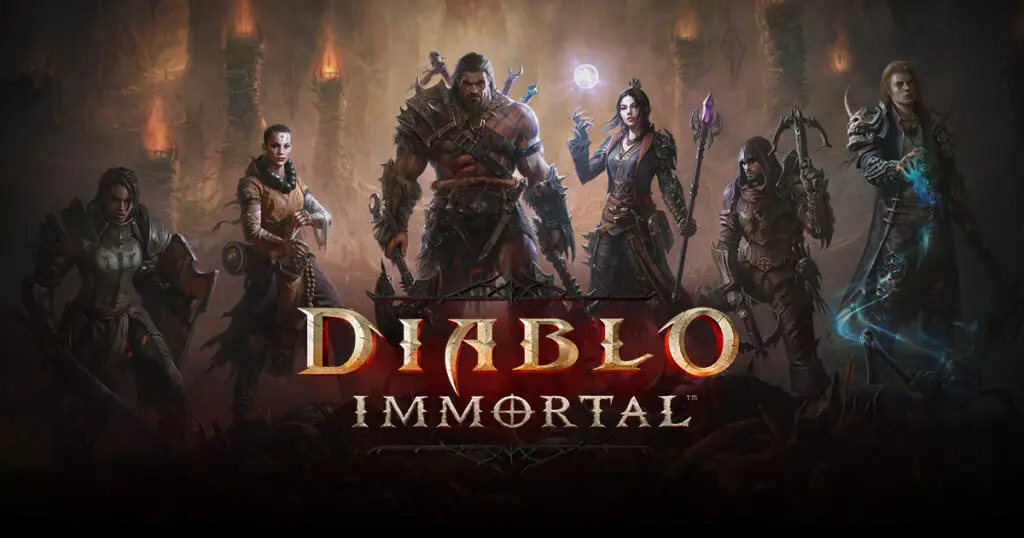Diablo Immortal has a significantly more fleshed-out Paragon system than Diablo 3. It supplements the endgame material by allowing players to further enhance and strengthen their characters.

However, the Paragon system is more than merely earning and spending Paragon Points for perks. There’s a lot more to it than that. The following tutorial will attempt to explain all there is to know about Diablo Immortal’s Paragon system.
Understanding the Diablo Immortal Paragon System
There is a level cap in Diablo Immortal. After reaching level 60 on a character, you will no longer be able to level up. The actual finale will begin at that point.
When you reach level 60, you will begin receiving Paragon levels rather than Experience levels. Your character will remain at level 60, but will now use the Paragon leveling system.
You should be conversant with three branches of the Paragon system:
- Paragon Levels
- Paragon Trees
- World Paragon System
Paragon Levels
After your character reaches level 60, you may begin accumulating Paragon levels. Every time you reach a new Paragon level, you will get a Paragon Point.
These Paragon Points may then be used on the Paragon tree to earn extra characteristics and unlock unique specialized abilities.
However, you may only use your Paragon Points on the character that earned them. You cannot transfer Paragon Points across characters, even if they are on the same account.
Paragon Trees
Blizzard Entertainment intends to introduce four additional Paragon branches to Diablo Immortal in the future.
Each tree is accessible after you reach a particular Paragon level and has a certain number of nodes that grant unique skill boosts and buffs. A single Paragon tree may cost up to 100 Paragon Points.
The Paragon trees and the Paragon levels they unlock are listed below.
| Paragon Tree | Paragon Level Required |
|---|---|
| Survivor | 1 |
| Vanquisher | 1 |
| Treasure Hunter | 50 |
| Gladiator | 100 |
| Soldier | 150 |
| Mastermind | 150 |
Further investigation reveals that each paragon tree has two sorts of nodes:
Specialization Skills: Buffs are only applied while their corresponding Paragon tree is active (these nodes are square-shaped)
Persistent Attributes: Buffs are always applied regardless of whatever Paragon tree is active (these nodes are circle-shaped)
It is critical to understand that a Paragon tree cannot be rested. Once you’ve invested your Paragon Points in a tree, it’s yours forever. As a result, it is critical to conserve your Paragon Points and prepare ahead of time on which nodes to spend them on based on your playstyle.
The table below will help you understand what sorts of benefits each Paragon tree delivers.
| Paragon Tree | Buffs / Bonuses |
|---|---|
| Survivor | Defensive |
| Vanquisher | Offensive |
| Treasure Hunter | Gold Find, Magic Find & EXP |
| Gladiator | PVP |
| Soldier | PVP & PVE |
| Mastermind | Party/Teammate |
Paragon World System
The Paragon World System was created to assist players who are unable to play the game on a regular basis so that they are not left behind by their friends. The disparity in EXP earned at various World Levels enables the gap in Paragon Levels of players on a server to be reduced.
Each Diablo Immortal server has a World Paragon Level. Every day, this increases by two. You may get varied amounts of additional XP based on the difference between your Paragon level and the World Paragon level.
If your Paragon level on a server is higher than the World Paragon level, you will have an EXP deficit. In this case, you will earn 25% less EXP than usual.
If your Paragon level is lower than the server’s World Paragon level, the amount of EXP you get will be doubled.
If your Paragon level on a server is near to the World Paragon level, you will get EXP points at the usual rate.